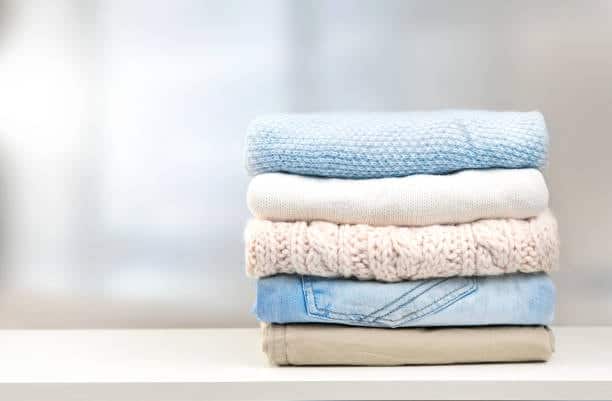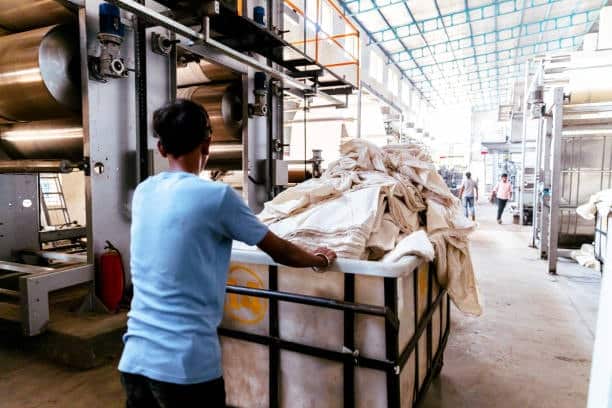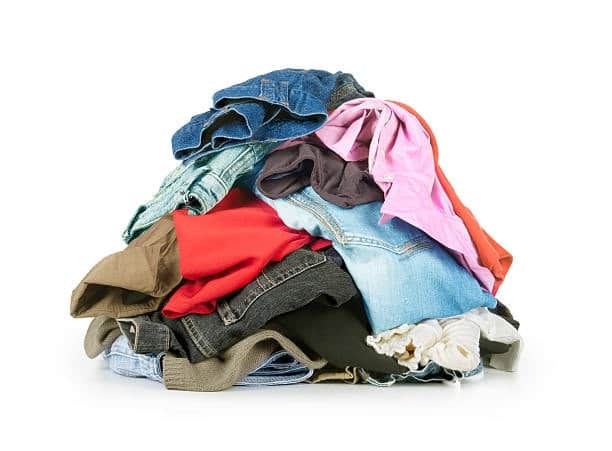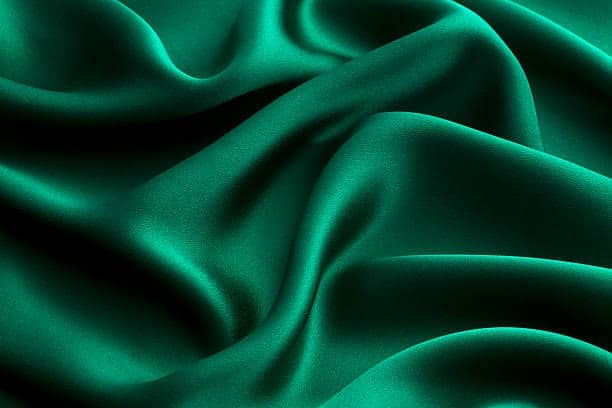Proper choice of fabrics to use in the clothes is critical towards fashion and comfort. Appreciation of the fabric types which include natural fabric, synthetic fabric and blended fabrics as well as assessing parameters like texture, weight and durability enable perfect matches for each garment made. Such choices as organic and cotton fabrics or bamboo for body suits adoption of eco-friendly materials and prevention of mistakes like inadequate drape or shrinkage. When applying these principles you are able to make stylish, comfortable and long-lasting garments, bringing your garment construction skills to a new level prehistoric times.
Understanding Fabric Types

1. Natural Fabrics
These are those fibres woven from plant, animal or minerals and their type include cotton, wool and silk respectively. Such materials are valued mainly for their capacity to breathe and for being environmentally friendly.
- Cotton: Described as super-soft and comfortable, cotton is ideal for dressed-up, casual wear, children’s wear, and holiday wear. It is a bit airy and it lets in sweat which is appropriate for very hot regions.
- Silk: Because it is very smooth, it also provides that rich look and as such it is so appropriate for formal wears and evening gowns. Indeed it falls well and while it has a natural silky lustre it can be a little delicate.
- Wool: That is why wool is ideal for winter clothes such as coat or sweater , although it is suitable for hot climate as well. They have various types of it; the merino, cashmere as well as the standard tweed.
- Linen: Rule of the thumb, linen is always light weight and perfect for warm or hot weather or the summer season. It is rather strong, and appears to be quite natural, but it creases quite easily.
2. Synthetic Fabrics
These materials may be defined in view of their production and frequently in relation to their intended properties, such as, durability and flexibility.
- Polyester: Polyester is all-round wear fabric because it is strong and cheap and does not crease easily. It is made from natural fibre but it is not so much comfortable as the natural fabrics.
- Nylon: Affordable and at the same time long-lasting, nylon is employed in sport wears as well as in outer garments.
- Spandex: Stretch is more familiar with the name of spandex, it has the property of tightness, i.e. it is worn that is for exercise or for tight clothing wear.
- Rayon: One of the most popular utterly artificial fabrics rayon looks as close to natural fabrics like silk or cotton as it can be. It feels nice on skin and it’s good with airflow; suitable for dresses and blouses.
3. Blended Fabrics
Garment sector partly or wholly of natural blended fibers with synthetic fibers for specific characteristic. For example, drape/ breathability and low wrinkling of cotton-polyester blends typically worn during normal wear apparels.
Evaluating Fabric Properties

1. Texture and Feel
Touch is one of the first dimensions of a garment; the feel of a fabric can therefore also influence the touch appearance of the clothes. Alway rubskin on the fabric to find out if the fabric is good for use or not.
2. Weight
Fabric weight is easily considered a crucial factor because fabric weight determines the physical properties by which a garment will hang and feel when it is being worn. More attractively, lightweight chiffon is suitable for casual classy styles other than applying bulky elegant styles that may need materials like denim.
3. Durability
It is also good to think of its strength if lightweight fabric is going to be used on produces that would be worn or washed over and again. Clothing materials prepared in factories including denim, canvas, silk and chiffon possess high strength but the latter two possess low durability.
4. Stretch
The products like activewear or any other design that involves skin tight fabric then the stretch fabrics like spandex or jersey materials should be used. This attribute should always be examined prior to purchase because if this attribute is inelastic there is nothing that can be done about it.
Matching Fabric to Garment Types

1. Casual Wear
For casual wear you should use light fabrics like; cotton, linen fabrics jersey or rayon for the clothes you intend to wear. It also entails non-complicated fabrics that ensure that free and convenient mobility is availed.
2. Formal Wear
For formal wears, some of the most preferred fabrics include ; silk satin and velvet home decor. They afford a regal look in their form in addition to texture to the item they cover and are particularly appropriate for occasions for instance weddings.
3. Activewear
The main fabrics like spandex nylon and polyester appropriately fit the stretchability and moisture absorption for the requirement of active wear.
4. Outerwear
As for accessories like jackets and coats it will be rather useful to focus on materials which are such as wool, leather or synthetic textile material for substances which should provide warmth as well as strength.
Practical Tips for Fabric Selection

1. Understand the Pattern Requirements
A lot of patterns usually aim at describing the kind of fabric or yarn that can be used. Here are some recommendations that if followed will assist you to give the garment that look you have planned.
2. Perform a Drape Test
It is also useful to hold the fabric to see how it will drop man made fiber. This is important in allowing you to know how the end product you are going to wear will look and look like.
3. Check for Shrinkage
Fabrics of cotton and linen that are dyed natural are characterized by shrinking especially after washing the garment. Remember to wash all fabrics before cutting since this may distrupt the size of the fabrics to be used.
4. Test Colorfastness
To determine if it will run, take a cloth with some water applied on it, wipe it over the fabric in question. This is especially so where the fabric has bright colours.
Sustainable Fabric Choices

Sustainable fabrics will assist in preserving the earth since it shall reduce you a lot on the environment. Consider the following options:
- Organic Cotton: These natural cottons are environmentally friendly and R/value; not treated with fatal and poisonous pesticides thus suitable for users with asthmatic and sensitive skin evening wear.
- Bamboo: The wider applications of bamboo fabric are that it is Bio-degradable, it has natural antimicrobial properties, and isSo comfortable to wear.
- Recycled Polyester: Create this fabric from the plastic bottles and reduce on waste material that is likely to be displayed in the environment.
- Hemp: Similar to marijuana, hemp has high density and more to the point it can grow when very little water is provided to it.
Advanced Fabric Considerations

1. Climate Suitability
Climate os an important factor as far as choosing the garment to be worn is concerned, therefore always look at the climate. Some of the warm materials include linen outfits; however, the woolen kind of outfits are worn in different cold season.
2. Allergies and Skin Sensitivities
When considering fabrics that might be a cause for skin reactions, place those that will least likely cause a reaction such as organic cotton or silk.
3. Maintenance
Determine knit fabric and how much care is going to be required by it twill fabric. Some fabrics such as silk require significantly more washing and cleaning than they offer some fabrics like polyester artificial silk.
How to Source Quality Fabrics

1. Visit Local Fabric Stores
One should go to see how the material looks and especially if the color is still vibrant.
2. Shop Online
As for the online fabric stores, there are most often descriptions on the product or other customers provide their experience hence making it easier for one to order the right fabrics.
3. Attend Trade Shows
They are always fine for chance of the various types of fabrics and possibilities of meeting vendors.
Common Mistakes to Avoid

1. Ignoring Fabric Care Instructions
Labeling care instructions is lethal to an article of clothing. These instructions should be provided on the label as a Nairobi resident gave his/her account of the same.
2. Overlooking Stretch and Recovery
In fitting garments, the fabric chosen must possess the characteristic of a stretch fabric and be able to return to a specific shape.
3. Choosing Fabric Based Solely on Appearance
A fabric maybe eye pleasing but feels bad when worn let alone the quality issue of the fabric. Never forget the should be a healthy dose of proportion in design as well.
Conclusion
It means it is an option hunt that seems to be equally inspired by aesthetics as it is by macho, analytical good-old business logic. It is possible to gain understanding regarding classification of fabrics, evaluation of some of their attributes, and distribution of specific fabrics for specific garments in order to meet the aim of manufacturing fashionable as well as useful apparels. To reiterate, more of the choices should be sustainable, and any personal hedonistic desires since these are the long-term sources of pleasures.
Five to ten minutes of your time for drape tests and to compare shrinkage and texture differences will go a long way in preventing this. Also, the fabrics which are bought from authentic markets and also consider the washing instructions that make your clothes to last long will be crucial.
Last but not the least, sewing one right material gives an ordinary design a touch of brilliance. As you sew a basic summer dress or an elegant evening gown the choice of cloth should be able to communicate your idea and craftsmanship.
